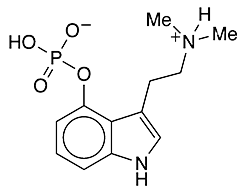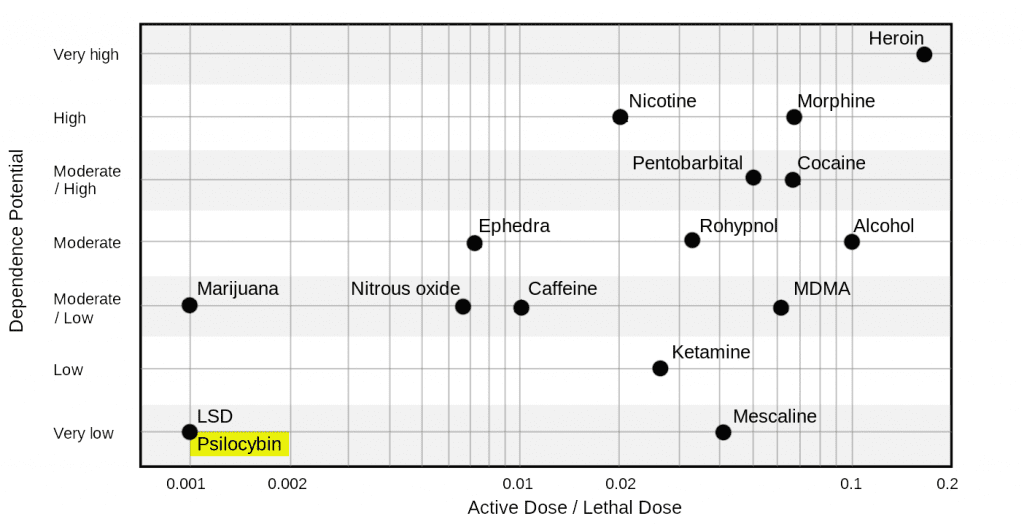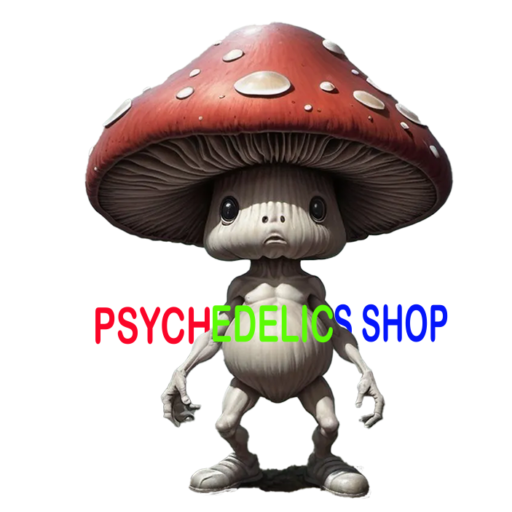Guide to Microdosing
Discover the art of mushroom microdosing.
What is mushroom microdosing?
Taking psilocybin mushrooms at a dosage that is so low as to go below the perceptual threshold is known as microdosing. With such little dosages, you can continue with your usual activities without experiencing major changes in perception, while yet benefiting from the physical, psychological, and spiritual effects of psilocybin mushrooms. Microdosing mushrooms can help with an overall rebalancing of the physical and emotional body, essentially helping you become more in touch with your own needs and more able to meet those needs in a healthy way. Personal reports from people worldwide support this theory, despite the paucity of scientific studies on the subject. The use of sub-perceptual amounts of magic mushrooms, known as microdosing, does not interfere with your ability to go about your daily activities and fulfill your obligations. Actually, incorporating the practice and its results into your daily life is the main goal. Most microdosers say they are able to accomplish all of their usual chores with more energy, attention, and creativity, as well as with better moods.

What is Psilocybin
More than 200 different types of mushrooms contain the hallucinogenic chemical psilocybin, which is sometimes referred to as magic mushrooms or psilocybin mushrooms.
The body transforms psilocybin into psilocin, which has effects that enlarge the mind. Except for Antarctica, psilocybin mushrooms are present all over the world and have been utilized for medical, spiritual, and religious purposes by various tribes and religions. The hallucinogenic mushrooms Psilocybe cubensis, Psilocybe semilanceata, Psilocybe cyanescens, Panaeolus or Copelandia cyanescens, and Psilocybe azurescens are some of the more well-known species that can be found in the wild.
How does it work
Whether taken in small or large doses, psilocybin mushrooms cause the brain to become hyperconnected, increasing communication between neural pathways. Studies have shown that psilocybin causes previously unconnected brain regions to form organized and stable links, essentially allowing for greater communication across the entire brain. Moreover, magic mushrooms help people who microdose the mushrooms rethink deeply ingrained thought patterns that are linked to anxiety, depression, and addiction. Many people have been able to break compulsive behaviors and thought patterns as a result of working with mushrooms, leading to happier, healthier, and more productive lives.
Compared to prescription antidepressants, magic mushrooms have a fundamentally different psychological effect. In the simplest terms possible, the distinction would be that pharmaceutical medications cause users’ emotions to become dull, providing a momentary reprieve from worry and despair. On the other hand, microdosing psilocybin appears to function by providing people with a means of purposefully and systematically facing their most difficult thoughts and feelings, rewriting their patterns or reactions to them, and ultimately resulting in long-lasting changes in perspective.
The neurotransmitter serotonin, which controls our mood, shares structural similarities with psychedelics like magic mushrooms. Similar to serotonin, psilocybin activates the 5-H2A receptor and increases the production of BDNF (brain-derived neurotrophic factor) and glutamate transmission. In addition to controlling abstract thought and thought processing, BDNF and glutamate play a critical role in mood and perceptual regulation.In addition to improving mood and cognitive function and stimulating the 5-H2A receptor, microdosing mushrooms can also help reduce the overactive Default Mode Network (DMN), which has been related to anxiety, depression, and the inability to remain in the present moment. Additionally, there is evidence that psilocybin therapy may facilitate the induction of a flow state, which is the difficult-to-express sensation of being in focused, at-ease harmony with our thoughts and behaviors.
Psilocybin mushrooms: traditional uses
Although the exact date of human discovery of this potent entheogen is unknown, rock drawings found in Australia and North Africa indicate that native tribes may have been using mushrooms as early as 10,000 BCE. There is also strong evidence from Mayan and Aztec ruins that demonstrates the significance of shamanic practices in religious and spiritual ceremonies for divination and healing dating back to 1,500 BCE.
Ethnobotanists and anthropologists started traveling to central and south America in the early 1900s to research and gather psilocybin mushrooms, but it wasn’t until the 1950s, when a story appeared in Life magazine, that magic mushrooms truly caught on in the West.
By the 1960s, Harvard University was conducting research that was showing encouraging results, lowering prisoner recidivism rates and resulting in much higher levels of spiritual experience for graduate divinity students.
The US federally banned psilocybin in 1968, classifying it as a Schedule I drug and contributing to the negative stigma surrounding its use, which led the ignorant, inexperienced public to view psilocybin use as dangerous and irresponsible. Despite the fact that the Harvard psilocybin project made it abundantly evident that the medicinal use of magic mushrooms showed great promise, the federal ban on psilocybin was implemented.
Psilocybin Use Today
A renewed focus on the therapeutic applications of psilocybin mushrooms in the late 1990s revealed significant potential for advancements in the fields of medicine, psychology, and spirituality. The Psychedelic Explorer’s Guide: Safe, Therapeutic, and Sacred Journeys by Dr. James Fadiman was published in 2011 and included information on the field of microdosing, which had not before been studied.
Research on the advantages and possible applications of microdosing mushrooms was sparked by Fadiman’s findings as well as the accounts and experiences of psychonauts worldwide. According to Fadiman’s self-published 2016 research, those who microdose were more connected and at peace with others as well as themselves, and they were also better equipped to overcome crippling emotional issues and overcome addictions. A 2015 podcast featuring well-known American author Tim Ferriss increased interest in, experimentation with, and healing for people and researchers worldwide in the field of microdosing.
The experiences of 21 men were examined in a recent Norwegian study, and almost all of them claimed that microdosing had improved their mood, creativity, and cognitive function. A double-blind, placebo-controlled study that was published at the end of 2018 in Psychopharmacology shown that microdosing participants’ creativity was increased. The enormous potential for healing and reawakening through entheogenic therapies like microdosing psilocybin grows with knowledge and experience gained worldwide.
How to microdose Psilocybin mushrooms.
Dosage

A typical microdose is between 1/20 and 1/10 of a “normal” dose, though this varies from person to person. This fluctuates according to a number of variables, such as metabolism, weight, and food. We advise utilizing one capsule of Neuro Botanicals at a starting dose of 50 mg, and adjusting as necessary.
When to Dose
Consume one or two capsules in the morning and afternoon. For instance, one after lunch and one after breakfast. We advise beginning users to adhere to a microdosing regimen for several months. After then, take a month or so off before beginning a new routine or just taking a dose when necessary, such as before a significant project or event.
Dosing Schedule
Since the Fadiman protocol, which calls for dosing every third day, has worked well for our customers, we usually recommend it. There are, however, other worthwhile choices, such as Paul Stamets’ suggested timetable of five days on and two days off. To determine the plan that works best for you, you might want to try a few different ones, but remember that Fadiman and Stamets both advise against building up tolerance by allowing a few days between doses. In addition, they advise adhering to the microdosing regimen for a few weeks and recording any changes in behavior, mood, social interactions, etc.
DAY 1
DAY 2
DAY 3
DAY 4

OFF DAY
OFF DAY

Tracking Your Result
Monitoring your emotions, thoughts, and behaviors can help you better understand the different ways that microdosing might affect your health and well-being. The following checklist can help you understand how medicinal mushrooms are interacting with you on a regular basis. Changes can be subtle.
- Thoughts: Is your mental state more organized or less so than usual? Which types of ideas are you having? Is your mind clear and concentrated, or is it fuzzy and dulled?
- Emotions: Are you experiencing more or less emotion than normal? Have your emotions acquired new significance or meaning? Has the nature of sexual intimacy changed?
- Creativity: Do you have an alternative point of view? Do you see fresh characteristics in stuff you didn’t previously consider? Do you have any more suggestions? Do solutions come together more quickly?
- Social: Have you modified the way you communicate with others? Have you noticed alterations in the way you speak? Expressions on the face? Are you grinning more now? Are you acting more amiable or combative than normal? How are you relating to and communicating with strangers, friends, family, and coworkers?
- Physical: To what extent do you feel conscious of your body? Shut your eyes and take calm, deep breaths. Are there any bodily experiences being brought to your attention?
- Outlook: Do you have a good or bad feeling? Is your opinion skeptical or optimistic? Do you have any fear? Reluctant? Are you able to sense the connection? Love? Calm?
Potential benefits of microdosing
The benefits of mushroom microdosing are nearly universal. There are countless advantages to microdosing. These are only a few of the many documented advantages of microdosers; there are many more.
Exercise: You may maintain your motivation and focus by using microdosing. Even though you might not typically enjoy spending an hour working out, many people report feeling more motivated and inclined to push themselves further because they have stronger willpower and a greater grasp of the many advantages of exercise. Microdosing is perceived by many as improving performance.
Cluster headaches and migraines: These conditions are incapacitating, sporadic, and frequently persistent. Headaches that impact not only their quality of life but also their capacity to hold down a job and maintain fulfilling relationships are reported by sufferers. Many people who suffer from migraines or cluster headaches have tried every pharmaceutical treatment that is available; however, they typically only experience fleeting or insufficient relief, and they frequently discover that the high prices and side effects have forced them to search for other options. Psilocybin is a naturally occurring substance that belongs to the tryptamine family, which also includes the triptans and ergots that are present in many migraine treatments. It functions by binding to the same receptors as these prescription medications, but without any unfavorable or hazardous side effects.
Facing Death: Depression and anxiety can become a crippling reality for those who are facing death. According to research from Johns Hopkins and New York University, psilocybin can boost feelings about life, relationships, and spirituality while also dramatically lowering anxiety and sadness in patients who are close to death. Six months after the trial, 80% of the study participants still had a more optimistic view on life and death. This, according to researchers, is caused by magic mushroom qualities that have the capacity to cause unusual shifts in emotions, perceptions, and thoughts.
Mushrooms for Depression: Take into account the fact that depression is one of the main global causes of illness and disability. Studies suggest that patients with depression may have highly active electrical pathways in a specific area of the hippocampal brain. Now consider that psilocybin’s potential to change existing brain circuits and form new ones is one of its unique properties. Could magic mushrooms provide those with depression with transforming relief? Studies show that when these new pathways are triggered, even a single dosage of magic mushrooms can provide people with depression—including those who are resistant to treatment—with instant and long-lasting relief from depressive symptoms.
Relieving Anxiety: People who suffer from anxiety often feel as though their life is too much to handle because of their intense fear and worry. Anxiety disorders are projected to affect 275 million individuals globally, and some of the most often given treatments for the condition can have paradoxical side effects, including increased anxiety, suicidal thoughts, and violent conduct. It has been demonstrated that taking little doses of mushrooms can help people feel less anxious and more at ease by assisting them in examining their inner concerns and anxieties. According to a 2017 study, mushroom treatment has an impact on the default mode network and the amygdala, two brain regions that are intimately related to how humans perceive emotions, including anxiety.
OCD and mushrooms: It is well known that treating obsessive compulsive disorder (OCD) can be quite challenging. OCD sufferers may feel ashamed and stigmatized because of the odd and even morbid nature of their symptoms, which can exacerbate their mental health issues. The effectiveness of psilocybin mushrooms in treating OCD was demonstrated in a 2005 study conducted in Arizona and Texas. All test subjects had significant reductions in OCD symptoms, and over half of them reported that the experience had been psychologically and spiritually enlightening.
Breaking Addiction: There are two possible outcomes from using microdosing mushrooms to treat addiction: prevention and treatment. Studies reveal that psychedelic mushroom experience may have a protective impact by actually lowering the incidence of opioid dependence. Although many people think that drugs are the cause of addiction, many actually think that addiction is a consequence of trauma. Microdosing mushrooms has been demonstrated to assist addicts consider what caused their trauma and discover more healthful means of establishing purpose and connection in their lives.
Relief from Menstrual Pain: A number of women have experienced relief from PMS, PMDD, and menopause-related hormonal irregularities.
Increased Creativity and intelligence: A recent University of Toronto study on microdosing revealed that participants scored higher on tests of wisdom, creativity, open-mindedness, and problem-solving skills. Similar outcomes were shown in another Norwegian trial, when subjects who took microdosing also reported improved mental clarity and alleviation from pre-existing illnesses like anxiety and sadness.
Spiritual Development: Working with magic mushrooms can result in a spiritual experience that can drastically change your perspective for all time, provided the right dosage, environment, and intention are met. Numerous people express sentiments of self-love, spiritual insight, oneness, and connection to the natural world. Twelve of the participants in a Johns Hopkins University study on the long-term psychological effects of psilocybin on adults stated that their experience was the most profound they had ever had, and two-thirds of them ranked it among the top five most spiritually significant experiences of their lives.
To attain flow state, one must be fully engaged in an activity for its own purpose, which is described as “the optimal state of consciousness where we feel our best and perform our best.” The ego evaporates. Time passes quickly. Like performing jazz, every thought, movement, and action is inextricably linked to the one before it. You’re giving it your all and making the most of your abilities. Microdosing encourages the flow state, which makes people more focused, patient, inventive, and open-minded. Those who have taken a microdose have reported feeling more present and able to do tasks with ease and accuracy, instead than being sidetracked by worries about the past or future.
Microdosing Psilocybin for PTSD: Conventional psychotherapy and medicine may not be sufficient for the vast majority of individuals suffering from PTSD and the severe difficulties they have in their post-trauma recovery. Many have had to cope not only with the psychological pain brought on by trauma, but also with rejection and social isolation, which only makes their suffering worse. Psilocybin has been demonstrated to have promising outcomes in treating a variety of diseases, including PTSD, and as such, the FDA has designated it as a “breakthrough therapy,” which allows research into its potential therapeutic uses to proceed more quickly.
Treating Eating Disorders: In 2019, researchers from the Johns Hopkins Psychedelic Research Unit started a clinical study to examine psilocybin’s impact on individuals suffering from chronic anorexia nervosa (AN). Researchers are optimistic that using mushroom treatment to treat eating disorders may be possible because of the phenomenological parallels between AN and other psychiatric diseases that have responded favorably to psilocybin therapy.
Assisting AIDS Survivors Who Are Demoralized Over Time: Currently, Dr. Brian Anderson of UCSF is investigating the effects of group therapy with psilocybin assistance on treating demoralization in long-term HIV/AIDS survivors. These are individuals who received their diagnosis prior to the development of life-saving antiretroviral medications and who were effectively informed that having HIV/AIDS meant one would die. Most have experienced loneliness, rejection, and hopelessness as a result of their diagnosis, and most have witnessed friends and community members pass away.
Risks Of Microdosing
Psilocybin mushrooms are generally safe for human health. Addiction or overdose are essentially impossible to occur. One possible issue is the paucity of studies on the long-term effects of microdosing. We so advise against microdosing for extended periods of time. There aren’t many psychological hazards associated with microdosing. Though it is doubtful that psilocybin would cause a physical addiction, any repeated action, even microdosing, has the potential to cause a psychological addiction. While uncommon, some dosers report feeling more anxious on the days of dosage; nevertheless, this is typically related to taking excessively high doses. Digestive problems and irregular sleep habits have also been reported. If you experience any side effects, we advise reducing the dosage.
among all chemicals that are psychoactive. The least likely to cause dependency or fatal dose is psilocybin.

*A note from James Fadiman on microdosing precautions: “We specifically do not recommend that people with colorblindness, who live with diagnoses of psychotic disorders or along the autism spectrum try microdosing. People with colorblindness report lasting visual distortions from microdosing. Literature suggests people with psychotic disorders may be harmed by psychedelics. In our experience, people with diagnoses along the autism spectrum seem to require dosages that far exceed what is traditionally considered microdosing.”
Frequently Asked Questions
Will I be seeing hallucinations?
No. A microdose is one-tenth to one-twentieth of a typical dosage. Since the effects are sub-perceptual, you should continue to be completely aware and able to go about your everyday activities while feeling more energized and focused. You shouldn’t think that there is something wrong with the way you see the world. Your dose is too high if you do. As you choose the ideal dosage for your body, we advise you to start modest and observe how you respond.
Can I continue to work and fulfill my regular obligations?
Indeed. You incorporate microdosing into your everyday regimen. It lets you be more creative and concentrated, but it shouldn’t interfere with your capacity to carry out your daily obligations.
Is it possible to detect psilocybin in a blood test?
The majority of routine drug tests do not include a psilocybin test. Psilocybin stops being detectable in the blood after around 12 hours, but some studies indicate residues may remain in the urine for up to 24 hours and in the hair for up to 90 days.
Is it prohibited to microdose mushrooms?
Psilocybin mushrooms are illegal in the UK unless they are produced, sold, or used for clinical trials or research. This is due to The 2005 Drugs Act, which was modified by The Misuse of Drugs Act 1971. On the other hand, microdosing is only medicinal and has non-intoxicating effects. There is reason to believe that the medical community and the legal system will soon take another look at the illogical and antiquated limitations imposed on magic mushrooms, as research on the many psychological and medical benefits of psilocybin continues to reveal.
How safe is microdosing?
The long-term effects of microdosing remain poorly studied, despite the fact that there are no signs that it is anything but helpful. Long-term research that has already been conducted has concentrated on higher dosages of mushrooms and has not demonstrated that mushrooms are harmful, even on “bad” trips. Actually, challenging travels usually result in more successes and favorable outcomes all around. It is unheard of for toxicity to cause disease or death. Are there any drugs that I cannot take while taking mushrooms? SSRIs, or selective serotonin reuptake inhibitors, are the most often prescribed drugs for treating a wide range of psychiatric conditions, such as anxiety, PTSD, depression, and OCD.
Among the most popular SSRIs are:
- Citalopram (Cipramil, Celexa)
- Fluoxetine (Prozac, Sarafem) • Escitalopram (Lexapro, Cipralex)
- Fluvoxamine (Faverin, Luvox)
- Seroxat, Paxil, and Paroxetine
- Sertraline (Lustraral, Zoloft)
SSRIs function by momentarily increasing serotonin levels, which can occasionally result in the potentially lethal condition known as serotonin syndrome. Therefore, while taking an SSRI, psilocybin—even in microdoses—is not safe.
Is it possible to overdose?
You won’t die from psilocybin mushrooms; there is no risk of a physical overdose. On the other hand, if you mistakenly overdose, there can occasionally be unfavorable effects. These are normally not dangerous, but they can be uncomfortable in certain situations. These could include different levels of panic, fear, worry, and an overwhelming sense of helplessness. While traveling, you have a few options for what to do, such as:
Breath. Breathe and use it as a guide.
Make a physical movement. This can assist you in clearing your mind and beginning to feel more at ease.
Consume. You’ll be able to feel more in control and grounded as a result.
Step outside. Those who are anxious after having a negative mushroom encounter typically find that being in nature helps them relax.
Play some music. Something instrumental and gentle.
How Can I Begin Using Microdosing?
Get in touch with Psychedelic clone shop to find out more about microdosing and its potential benefits.
Neuro Botanicals contributed this guide.

